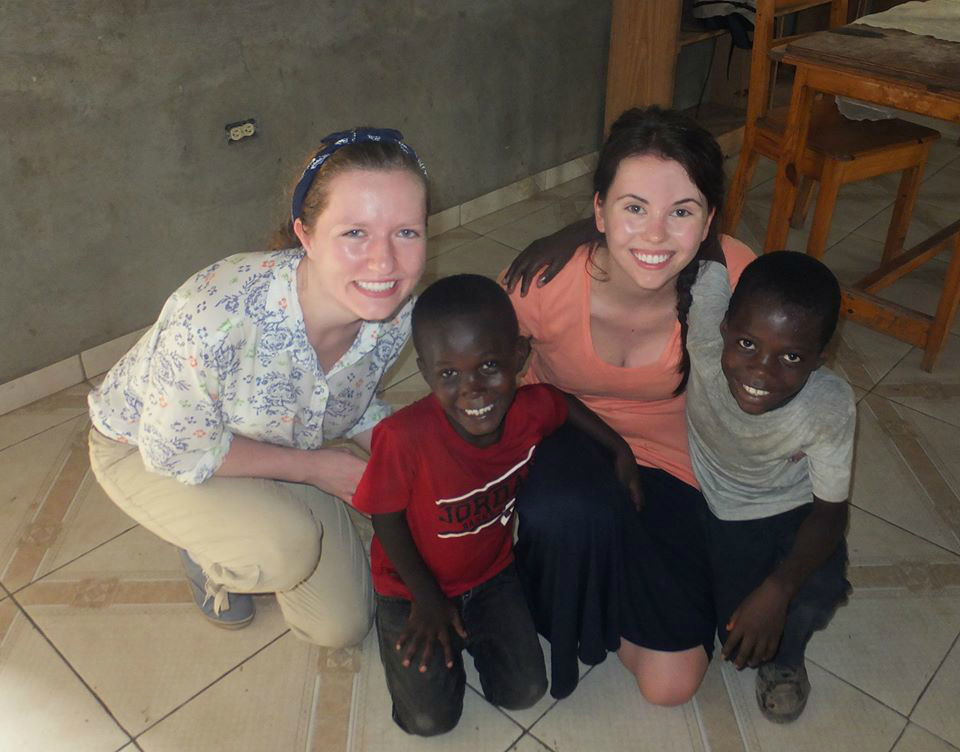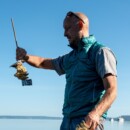Page 6 • (110 results in 0.044 seconds)
-
Biology Courses Take the following two introductory biology courses: BIOL 225: Molecules, Cells and Organisms BIOL 226: Genes, Evolution, Diversity and Ecology Many programs require some of the upper
courses: BIOL 225: Molecules, Cells and Organisms BIOL 226: Genes, Evolution, Diversity and Ecology Many programs require some of the upper level courses listed below in addition to general biology courses. Please verify with the specific programs you are interested in to be sure all requirements are met. BIOL 342: Microbiology BIOL 330: Genetics BIOL 341: Developmental Biology BIOL 352: Comparative Anatomy BIOL 357: Histology BIOL 442: Cell Biology BIOL 453: Mammalian Physiology Please make sure you
-
Biology Courses Take the following two introductory biology courses: BIOL 225: Molecules, Cells and Organisms BIOL 226: Genes, Evolution, Diversity and Ecology Many programs require some of the upper
courses: BIOL 225: Molecules, Cells and Organisms BIOL 226: Genes, Evolution, Diversity and Ecology Many programs require some of the upper level courses listed below in addition to general biology courses. Please verify with the specific programs you are interested in to be sure all requirements are met. BIOL 342: Microbiology BIOL 330: Genetics BIOL 341: Developmental Biology BIOL 352: Comparative Anatomy BIOL 357: Histology BIOL 442: Cell Biology BIOL 453: Mammalian Physiology Please make sure you
-
Biology Courses Take the following two introductory courses: BIOL 225: Molecules, Cells and Organisms BIOL 226: Genes, Evolution, Diversity and Ecology You might also consider taking some of the
, Diversity and Ecology You might also consider taking some of the following upper division courses: BIOL 330: Genetics BIOL 341: Developmental Biology BIOL 342: Microbiology BIOL 352: Comparative Anatomy BIOL 357: Histology BIOL 442: Cell Biology BIOL 453: Mammalian Physiology Often dental schools require you to take a course in microbiology, anatomy and/or physiology. Please make sure you look at the requirements of individual schools.Physics Courses PLU has two introductory physics series. Students
-
Biology Courses Take the following two introductory courses: BIOL 225: Molecules, Cells and Organisms BIOL 226: Genes, Evolution, Diversity and Ecology You might also consider taking some of the
, Diversity and Ecology You might also consider taking some of the following upper division courses: BIOL 330: Genetics BIOL 341: Developmental Biology BIOL 342: Microbiology BIOL 352: Comparative Anatomy BIOL 357: Histology BIOL 442: Cell Biology BIOL 453: Mammalian Physiology Often dental schools require you to take a course in microbiology, anatomy and/or physiology. Please make sure you look at the requirements of individual schools.Physics Courses PLU has two introductory physics series. Students
-
News articles and blog posts from Pacific Lutheran University.
The A&P lab gets renovated Check out the newly renovated anatomy & physiology lab in our Rieke Science Center! February 22, 2023 AcademicsBiologyNursing
-

Nursing Students With—and on—a Mission PLU Nursing students Madison Gatterman, left, and Sarah Jamieson taught basic healthcare and dental hygiene to young children at a Haitian orphanage. (Photo courtesy of Gatterman and Jamieson) Juniors Return to Haiti to Teach at an Orphanage — and Encounter…
physiology.“This task [teaching health classes] was very important to us,” Jamieson said. “We realized from our first trip to Haiti in 2011 that access to healthcare is not a reality for most Haitians. If we can give these kids the tools to know what to do in situations, they will be able to contribute to society in valuable ways.” Both women said they also formed special bonds with their fellow mission workers and the people of Haiti. “Haiti is a very difficult place to be,” Jamieson said. “But the
-
If jumping out of a perfectly good airplane sounds like fun, then Airborne School may be of interest to you. Earn the wings of a U.S.
(CLC). Combat Diver Qualification CourseStudents are trained in specialized physical conditioning, waterborne operations to include day and night ocean subsurface navigation swims, day and night team infiltration dives, deep dives, search dives, diving physics, physiology and injuries, cardiopulmonary resuscitation, marine hazards, tides and currents, US Navy dive tables, submarine lock-in/lock-out familiarization, closed-circuit and open-circuit dives, surface swims, small boat operations, and a
-
News articles and blog posts from Pacific Lutheran University.
Biology class participates in research project Beautiful mutants: a PLU biology class harvests for the future About two years ago, PLU professor Neva Laurie-Berry partnered with a world-class plant research center. The Donald Danforth Plant Science Center in St. Louis, Mo., sends Laurie-Berry’s BIOL 358 Plant Physiology class millet seeds with… March 13, 2023 AcademicsBiologyProfessorsResearchSciencesSeeker
-

We asked students Megan B. ‘23 and Peyton S. ‘23 to share their thoughts on what it’s like to be a kinesiology major at PLU. Here’s what they had to say. Wondering what kinesiology includes? Overall, it’s the study of human movement and the science…
body positivity and I am so so grateful that I had a chance to take it. Absolutely find a way to fit it into your schedule at some point!!” – Megan How is your kinesiology major preparing you for your next steps/career goals? As a future physical therapist/occupational therapist, the PLU Kinesiology department has given me a great base foundation. It has let me dip into all different aspects from biomechanics analysis, psychology and physiology that specifically focused on exercise. It has given me
-

Director of Environmental Studies | Environmental Studies | behrenmd@plu.edu | 253-535-7565 | My teaching activities focus primarily on ecology and animal diversity.
aquatic systems. Much of my past research has focused on interactions between herbivores and algae in marine systems. This has included studies of geographical gradients of herbivorous fish diversity and how temperature effects on physiology may play a role in driving this pattern and the effects of fisheries and disease on sea urchins and kelp forest ecology. My current research projects include studies of the community ecology of rocky shores of Puget Sound, disease ecology of sea urchins, and
Do you have any feedback for us? If so, feel free to use our Feedback Form.


